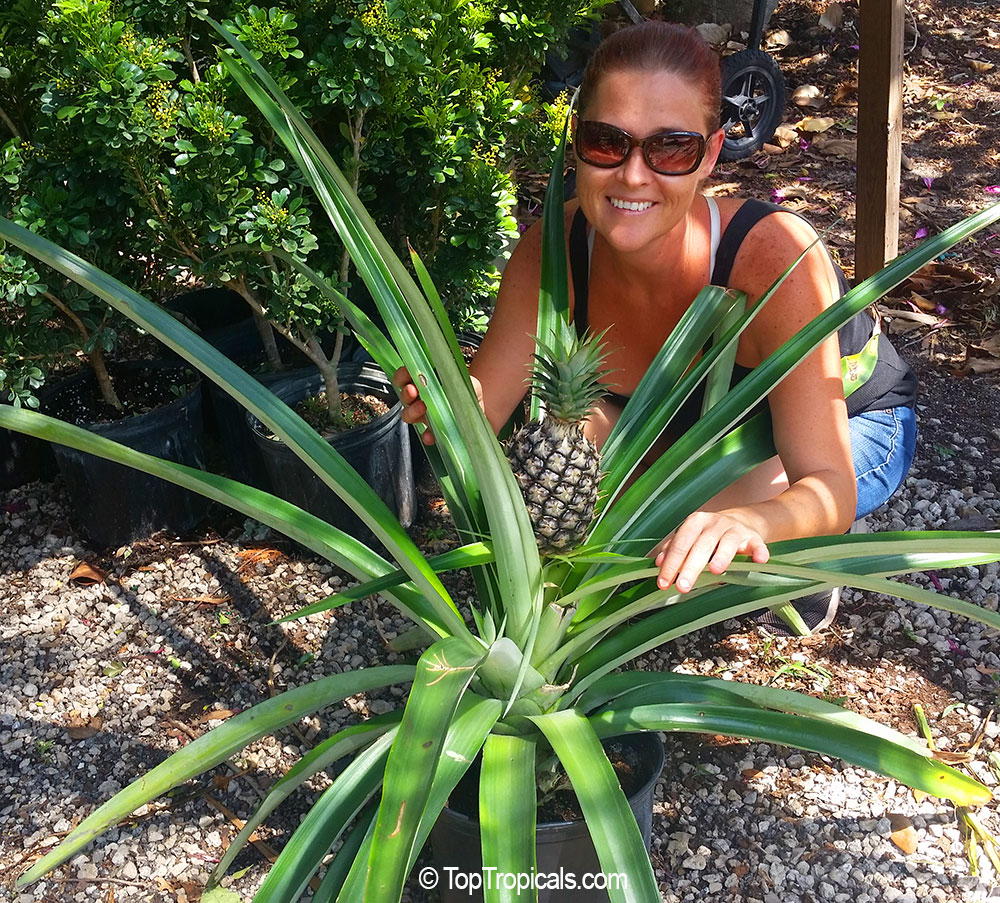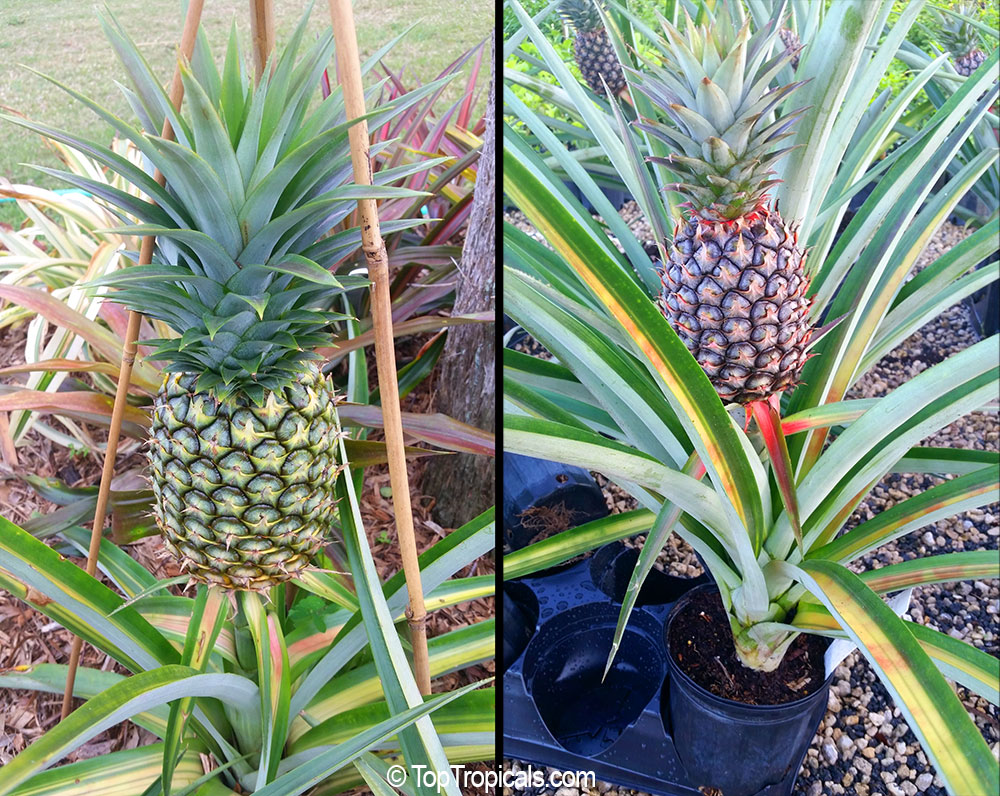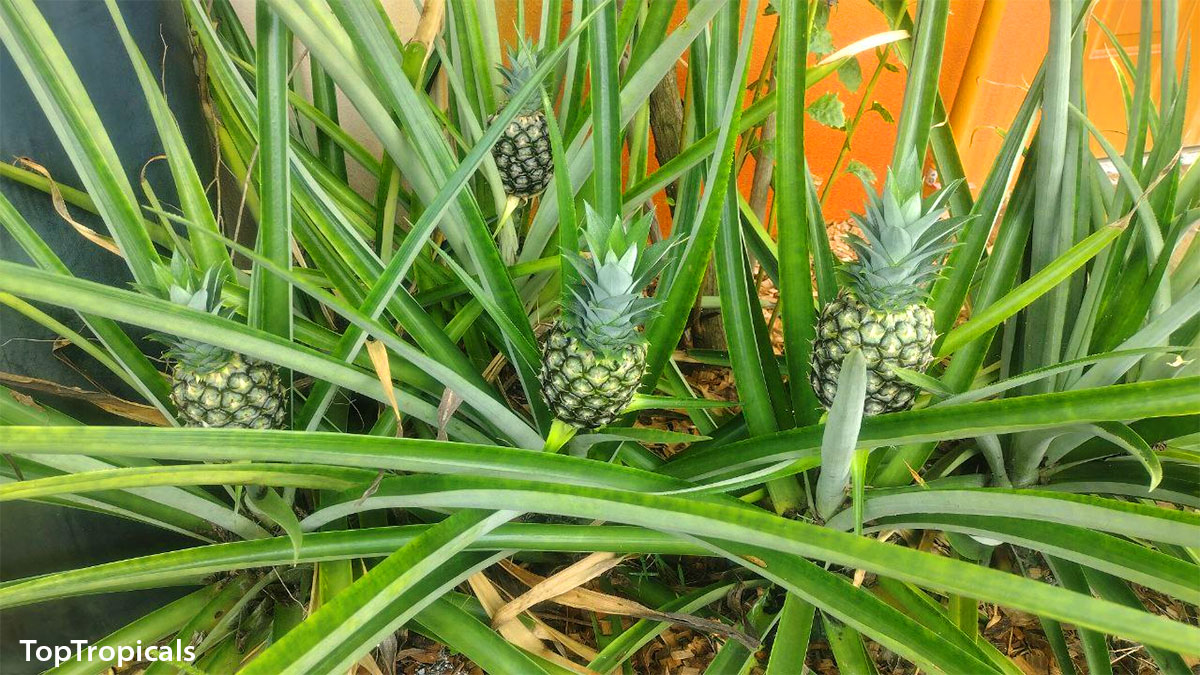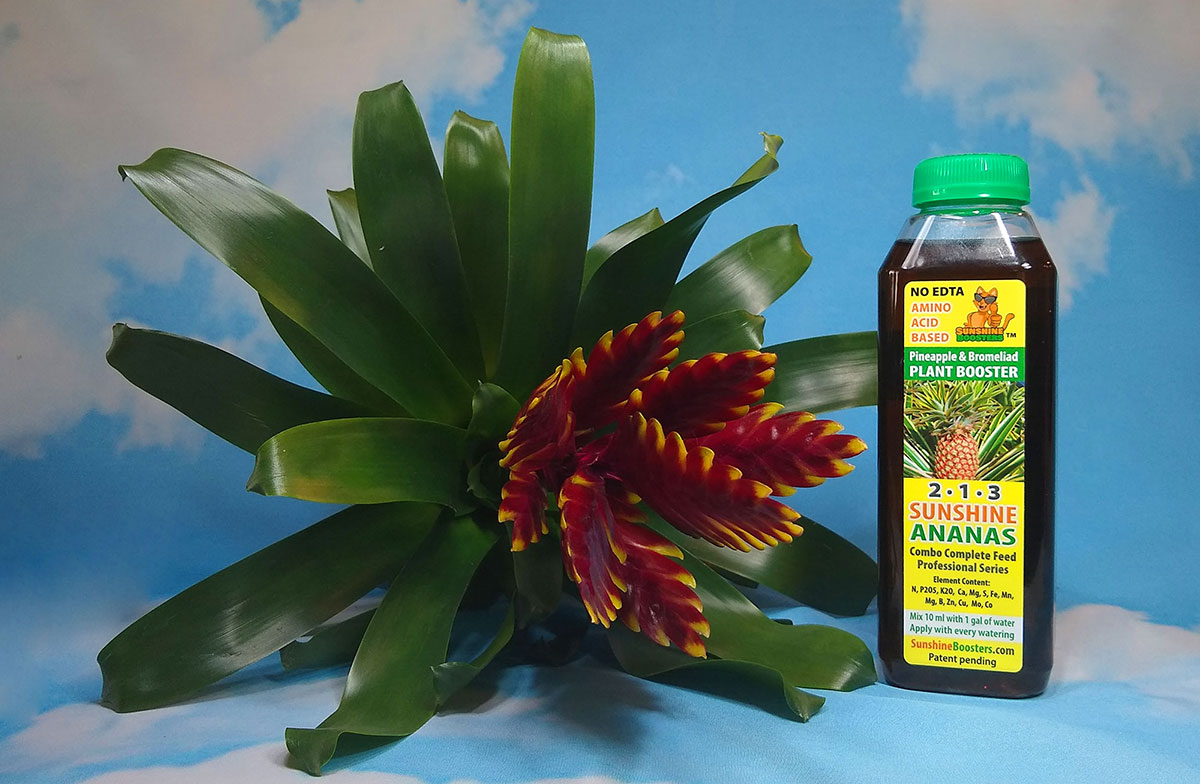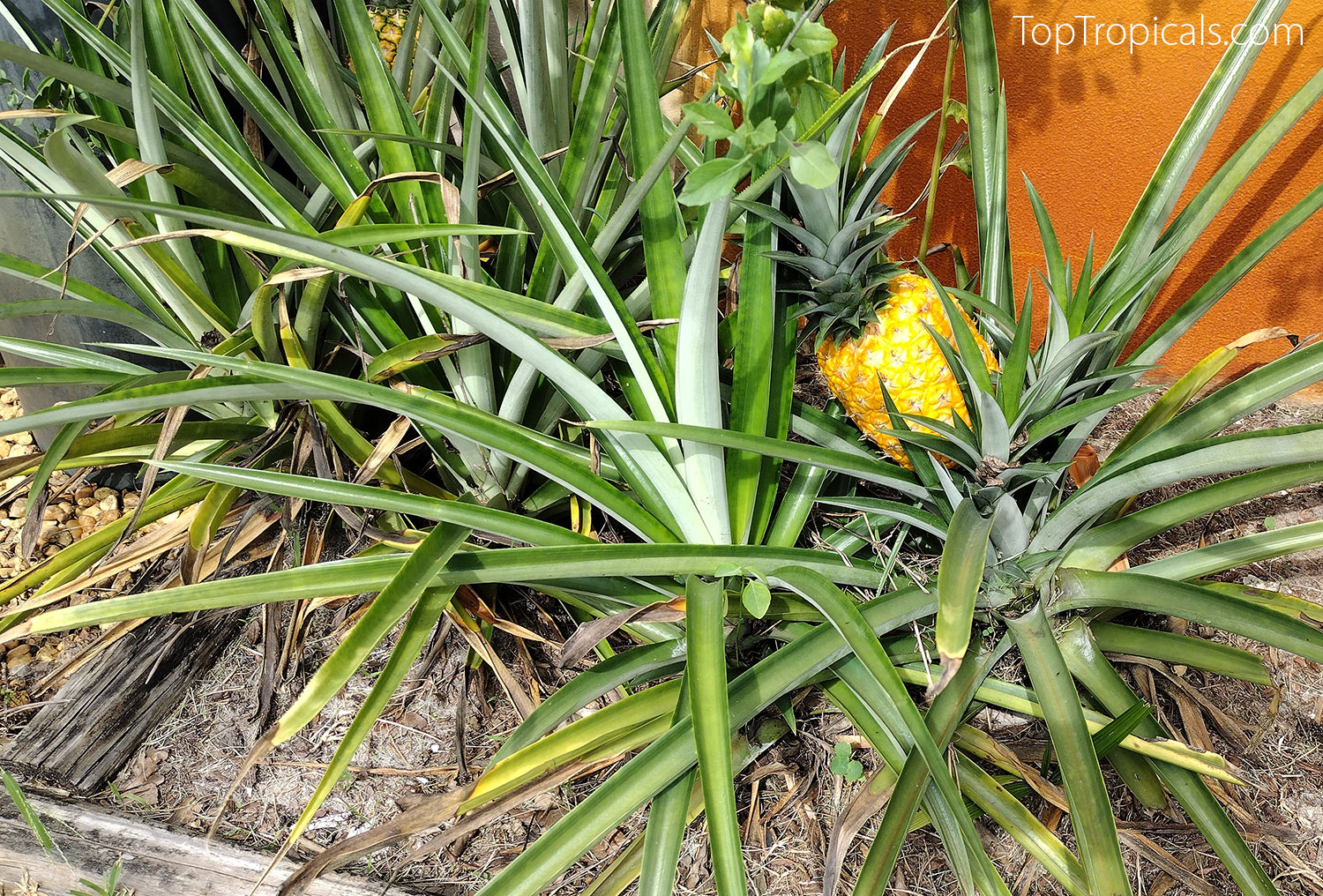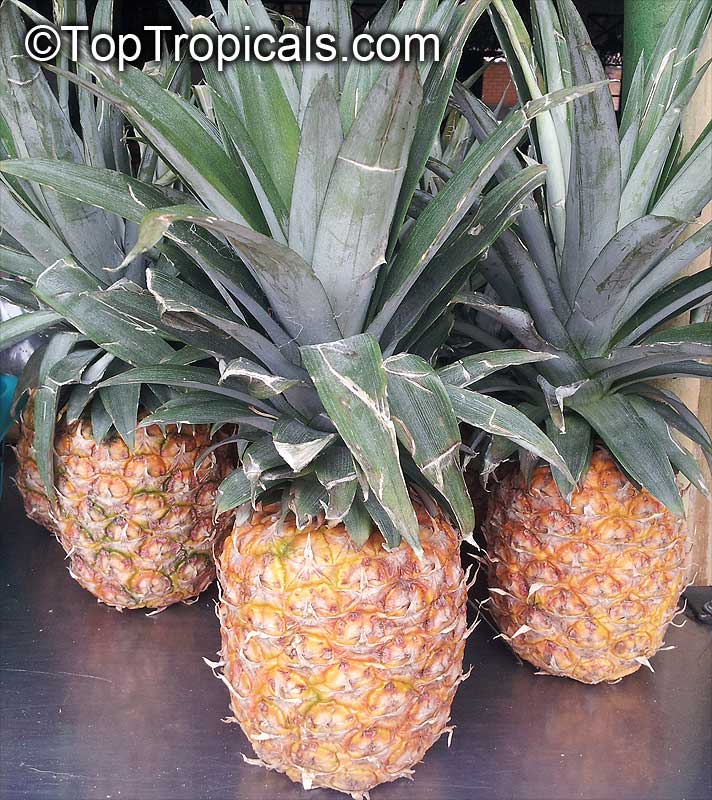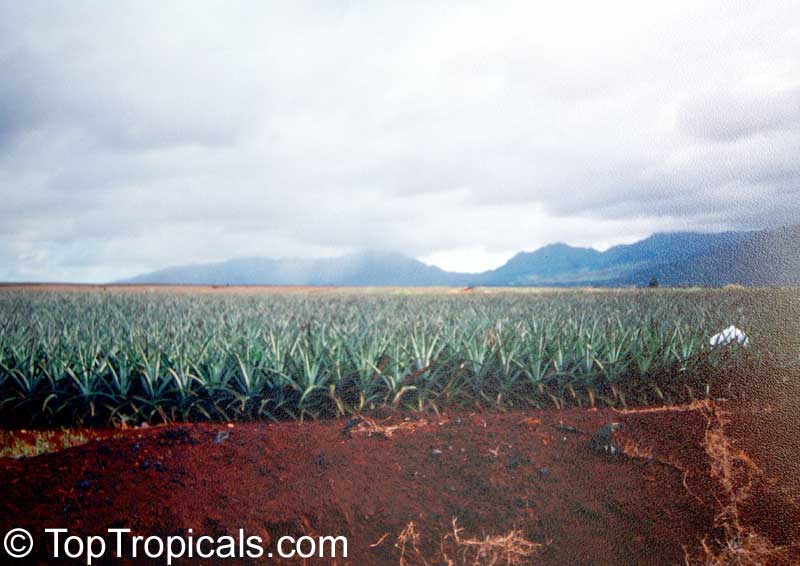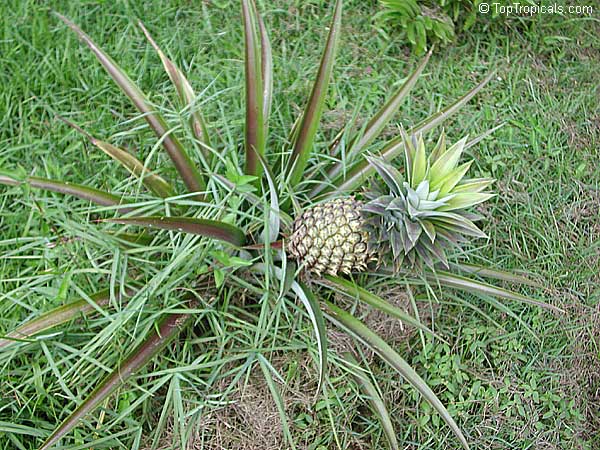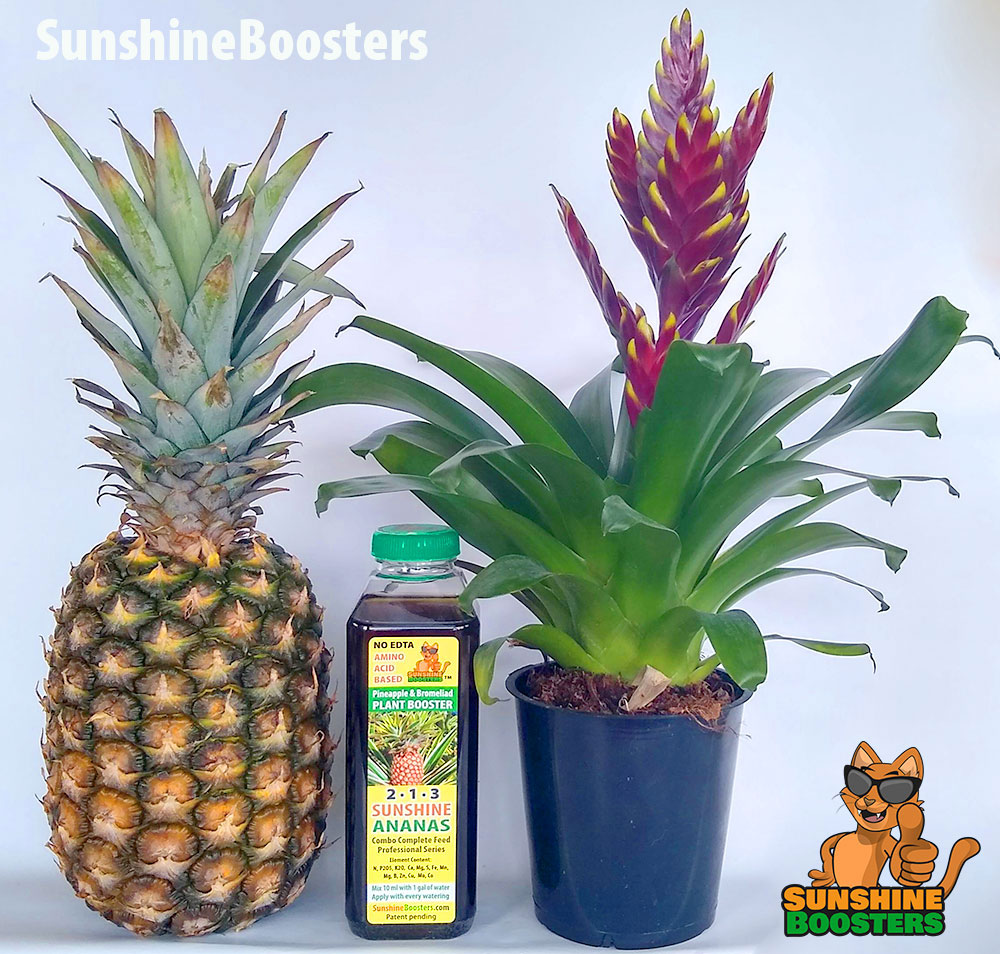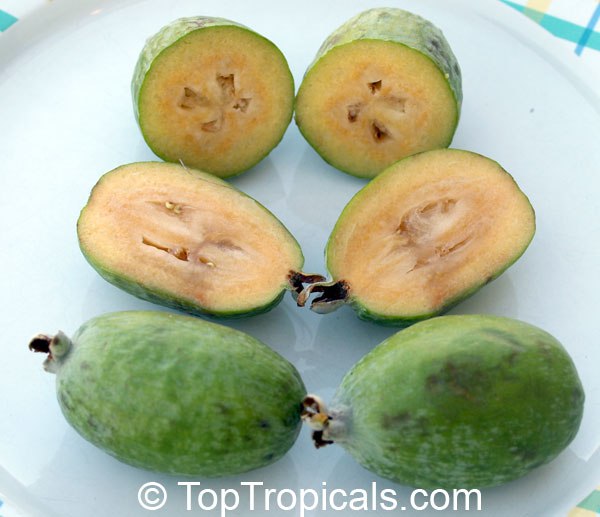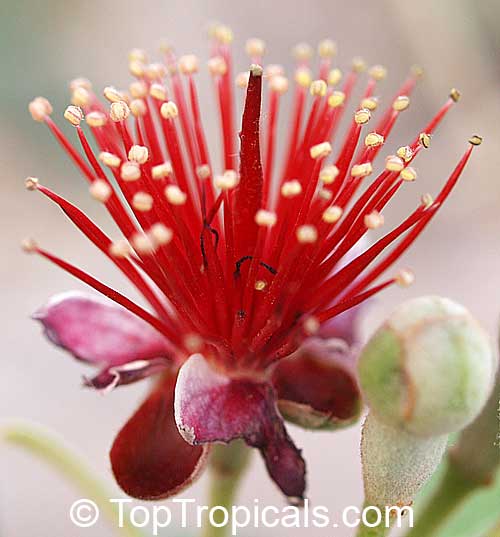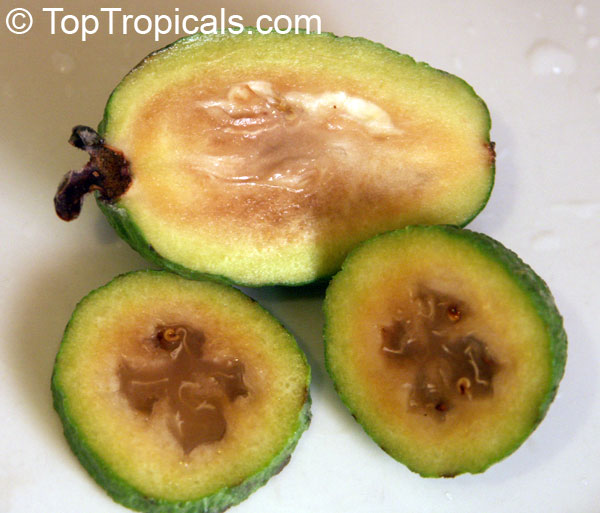Garden Blog - Top Tropicals
Date:
Five benefits of growing your own Pineapple
Q: Can I grow my own pineapple fruit?
A: Growing a Pineapple plant - Ananas comosus - is a fun and rewarding experience that offers both visual and practical benefits:
1. Fresh, homegrown fruit: One of the main benefits of growing a pineapple plant is that you can enjoy the fruits of your labor by harvesting fresh, delicious pineapples right from your own backyard.
2. Aesthetic appeal: Pineapple plants are visually appealing with their long, spiky green leaves and bright, vibrant fruits. They can add a tropical, exotic touch to any garden or indoor space.
3. Low maintenance: Pineapple plants are relatively easy to grow and require minimal maintenance. They can tolerate a variety of soil and light conditions and don't require frequent watering or fertilization.
4. Health benefits: Pineapple fruit is rich in vitamins, minerals, and antioxidants that can provide a range of health benefits, including improved digestion, boosted immunity, and reduced inflammation. It is recommended to eat a slice of a pineapple after every meal to keep healthy digestive system.
5. Collectable varieties: The pineapple plant can be easily propagated by cutting off the top of a pineapple fruit. However, for those seeking excellent quality, it is recommended to choose superior hybrids from professional growers. Become the proud owner of "The King of Fruits" collection! It takes up minimal space and provides fresh fruit throughout the year.
Read more about Pineapple: The most luscious Hospitality Fruit - Pineapple.
Remember to add Sunshine Ananas fertilizer to your purchase for a long lasting Pineapple crop season.
Date:
Pineapple Season started!
The most luscious Hospitality Fruit
Pineapple plant (Ananas comosus) produces a delicious fruit treat and is a fascinating plant to grow.
King of fruits. Pineapple is often referred to as the "king of fruits" (along with Durian and Mango). It is cherished for its sweet and tangy taste, refreshing qualities, culinary uses, and health benefits, including high vitamin C content and digestive enzymes.
Bromelain for healthy guts: pineapples contain an enzyme called bromelain that can break down proteins and is often used as a meat tenderizer. It's great for digestion; eat 1 slice of pineapple after every meal to maintain healthy digestive system.
Single fruit per plant: each pineapple plant produces just one pineapple per year.
Growth time: It takes about 18-24 months for a pineapple to mature and be ready for harvest.
Symbol of Hospitality: in many cultures, pineapples are a symbol of hospitality and welcome.
Those are berries! A pineapple is formed from many individual single fruit (technically, berries), which fuse together around the core.
Cultivation. Pineapples are easy to grow. They need very little water to thrive, and take full sun, shade, semi-shade. For faster production, fertilize with SUNSHINE boosters Ananas - Pineapple and Bromeliad Booster. Perfect container plant, Pineapple can be grown indoors as a houseplant. Many superior varieties are available in selection.
Learn more: The most luscious Hospitality Fruit - Pineapple.
The most luscious Hospitality Fruit
Pineapple plant (Ananas comosus)
💥 Pineapple plant (Ananas comosus) produces a delicious fruit treat and is a fascinating plant to grow.
- 🔻 King of fruits. Pineapple is often referred to as the "king of fruits" (along with Durian and Mango). It is cherished for its sweet and tangy taste, refreshing qualities, culinary uses, and health benefits, including high vitamin C content and digestive enzymes.
- 🔻 Bromelain for healthy guts: pineapples contain an enzyme called bromelain that can break down proteins and is often used as a meat tenderizer. It's great for digestion; eat 1 slice of pineapple after every meal to maintain healthy digestive system.
- 🔻 Single fruit per plant: each pineapple plant produces just one pineapple per year.
- 🔻 Growth time: It takes about 18-24 months for a pineapple to mature and be ready for harvest.
- 🔻 Symbol of Hospitality: in many cultures, pineapples are a symbol of hospitality and welcome.
- 🔻 Those are berries! A pineapple is formed from many individual single fruit (technically, berries), which fuse together around the core.
- 🔻 Cultivation. Pineapples are easy to grow. They need only a little water to thrive. Take full sun, shade, semi-shade. For faster production, fertilize with SUNSHINE boosters Ananas - Pineapple and Bromeliad Booster. Perfect container plant, can be grown indoors as a houseplant.
- 🔻 Propagation: pineapples can be grown from the crown of the fruit. If you like the variety of the fruit you just ate, just cut the top off and plant it in potting soil, it will root within a few weeks. Make sure to not overwater it. Many superior varieties are available in selection.
📚 Learn more: The most luscious Hospitality Fruit: Pineapple
🛒 Select Pineapple varieties
#Food_Forest
🏵 TopTropicals
Date:
Top varieties of pineapples
Q: I want to grow my own pineapples, which varieties do you recommend for the best production? Do I need any special organic fertilizer?
A: Growing your own pineapple is pure bliss. Watching the transformation from a small crown
into a luscious fruit is immensely rewarding. Every tropical gardener should
experience the joy of growing this tropical gem and relishing its sun-kissed
sweetness straight from the garden. Pineapples are easy to grow and can
fruit in containers too, so if you live in a colder climate, no problem! They
will take very little space in your greenhouse or sunroom. Just remember to feed
your pineapple plants with Sunshine Boosters so they will feed you the biggest and the sweetest
fruit! Sunshine Boosters are natural, organic-amino-acid based plant nutrients
that are perfect for any edibles.
There are several varieties of pineapples in commercial cultivation. Below
are the most interesting cultivars. Discover the pineapple paradise!
Elite Gold: Bursting with tropical flavor and vibrant gold flesh, Elite Gold dazzles with its unique taste and ornamental beauty.
Florida Special: Perfectly balanced sweetness and acidity, this variety thrives in warmer climates, gifting you a taste of Florida's sunshine.
Sugar Loaf: Irresistibly sweet with a hint of citrus, Sugar Loaf's compact size makes it an ideal choice for container gardening.
White Jade (Spineless Sweet): Exceptionally sweet and without spines, White Jade pampers you with a delectable, thorn-free harvest.
Lava Burst (Burgundy Variegated Rainbow): This visually stunning ornamental pineapple variety boasts striking burgundy and green leaves, resembling a rainbow of colors. Its fruit edible but small; its exceptional beauty adds a touch of exotic elegance to any garden or indoor space. Lava Burst is a delightful conversation starter and a captivating addition to your plant collection, making it a favorite among pineapple enthusiasts for its aesthetic appeal.
Embrace the sense of accomplishment and the satisfaction of savoring homegrown, mouthwatering pineapples - nature's sweetest gift!
Read more about Pineapples: The most luscious Hospitality Fruit.
Date:
Healthy Plants: Q&A from Mr Booster
Pineapple Season is Here!
Pineapple season is here and people often ask, "how do you get them to grow?" Well, the answer is simple really. One method involves cutting the top off a pineapple, prepping it and then planting it. You can find several different ways to do this with a short Google search. Of course the easiest way is to purchase plants that have already been started. You can do that here...
CONTINUE READING >>
Date:
The most luscious Hospitality Fruit: Pineapple
by Mark Hooten, the Garden Doc
I wonder how many people know that the Pineapple (Ananas comosus) was actually the very first New World
tropical fruit to have been sampled fresh by European royalty? It happened 527
years ago, when one made it to Spain, being personally delivered to King
Ferdinand and Queen Isabella by Christopher Columbus... He had obtained a huge number
of them, however only one actually survived intact and edible! That
pineapple was instantly declared to be the most luscious wonderful fruit ever!..
...During the 1700s before the Revolutionary War, the overly monetarily
intoxicated super-rich were actually paying a modern equivalent ofâ - get this
- 8000 dollars for a single fruit!..
...In conclusion, I will add the simple recipe for my personally favorite
go-to comfort food...
CONTINUE READING >>
Date:
How cats eat pineapples
TikTok Reels from TopTropicals
Our PeopleCats love roaming in the gardens. They often guide customers in our Garden Center, and their favorite isle is fruit trees! At this time of the year, Pineapples are ripening, and these fruit are always fun for both people and PeopleCats.
In this short video, Philemon and Scooby are discovering new tastes of Pineapple varieties.
More to see: Watch Philemon eating Avocado!
Discover more exotic plants and fun garden happenings from our TikTok updates!
Subscribe to Top Tropicals TikTok:
Date:
The Best Pineapples
Q: What varieties of the Pineapple are the best for planting in Florida? When do they fruit? I have a small yard, with a room for one or two, but can I keep more in pots? I am excited to grow my own pineapples!
A: Pineapple is truly the King of fruits! One of the most
delicious fruits in the world. They start flowering from January to March in Florida
and yes, they happily grow in the ground as well as in pots. Heaviest
fruiting is in Summer (May to September), and some staggered throughout the year.
Be careful with watering, keep in mind that like any bromeliad, Pineapple
needs very little water and needs the soil to get dry between waterings. Use
only acidic soil and acidic plant food.
Make sure to feed these plants on regular basis, especially if grown in
pots. Pineapples are heavy feeders but are also very sensitive like all
bromeliads, so be careful with traditional fertilizers, do not exceed recommended
dosage. It is safe to use liquid amino-acod-based Sunshine Boosters Ananas fertilizer year round.
The mot popular pineapple varieties for home growers
are:
Elite
Gold
Royal
Hawaiian - Royale
Sugar
Loaf
Why is it called Pineapple Guava? It tastes just like strawberries! Feijoa Superfood
- Feijoa is certainly one of the easiest fruit trees to grow as it does not require much care.
- Feijoa is an attractive, evergreen large shrub that produces lovely edible flowers and fruit.
- The fruit is eaten fresh, added to smoothies, fruit salads, used to make delicious jam (that tastes like Strawberry Jam on steroids!), and wicked chutneys.
Feijoa fruit go a long way in flavor!
📚 Learn more about Feijoa
🛒Grow your own Feijoa
#Edible_Forest #Guava
TopTropicals.com
We Grow Happiness
Date:
Flavor of Feijoa Superfood
by Onika Amell, tropical plant specialist
Q: What exactly is Feijoa - Pineapple Guava? Does the fruit really taste like pineapple? I am curious to know if it is easy to grow.
A: Feijoa is certainly one of the easiest fruit trees to grow as it does
not require much care. It is an attractive, evergreen tree or large shrub with
dark green, oval, leathery leaves. It has an abundance of uses in the garden
and produces lovely edible flowers and fruit! The fruit is eaten fresh,
added to smoothies or fruit salad and is also commonly used to make delicious
jams and wicked chutneys. Feijoa fruit go a long way in flavor.
This plant is drought tolerant and will grow in almost any soil type. It
loves full sun or partial shade and is wind resistant. A lot of gardeners like
to grow it as a wind barrier for this reason. It can easily be shaped into a
dense, informal hedge or screen that needs very little pruning. Because of
this density, it provides excellent shelter for all kinds of wildlife.
Butterflies, birds, and butterflies will all love you for growing Feijoa!
Space the plant five feet apart to create a wind barrier hedge. Heat does
no not bother it at all and it will also withstand temperatures to 10 degrees
F.
The plant gets its names from the delicious perfume it emits. Some folks
seem the fruit taste like pineapple, with a slight minty undertone. Others feel
the flavor reminds them of juicy fruit gum! The texture is described as
smooth and slightly gritty - almost like a pear, but firmer.
If you prefer to grow this plant as a tree rather than a large shrub,
simply remove the lower branches up to one-third of the tree's height over a
period of time. The Pineapple Guava can grow up to 15 feet wide and tall. They
also do really well as a container plant on patios where you can truly enjoy the
lovely fragrance of the fruit. It prefers rich, organic, well-drained soil
and will need light fertilization every other month in most soils.
We recommend:
Fruit Festival Plant Food - Super Crop Booster
Mango-Food - Smart Release Fruit Tree Booster
SUNSHINE-Honey - Sugar booster
SUNSHINE C-Cibus - Crop Nutrition Booster
Pretty, pink, edible flowers will wow you from May to June, followed in late summer or fall by the delicious and fragrant fruit. An interesting thing about this fruit is that you don't pick it. It falls to the ground when it is ripe. Or simply place something under your tree, like a tarp, and shake the tree. The ripe fruit will fall off. You can store the fruit in your refrigerator for up to a week. And remember! The fruit of the Feijoa is not only a very rich source of soluble dietary fiber, but also an excellent source of Vitamin C, and very rich in antioxidants. They are also low in calories. Each fruit only holds 55 calories.
